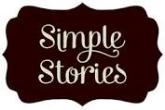Water markers / brushes have so many features that they definitely worth a blog post 😉.
So let's see what exactly a water marker is and what is used for!

If you enjoy painting with watercolor paints, if you like calligraphy and/or mixed media techniques then water markers are a must-have tool!
Water markers, a Japanese invention, have many advantages 😉 to begin with: drawing with watercolor paints can be a piece of cake!
These markers can be found in different sizes, having each of them for a different purpose!

- the small is ideal for details, such as coloring your stamps or small surfaces in your designs.
- the middle is the one you will use the most! Very useful for almost all your projects and ideal for your beginnings because it requires neither as much precision as the small one nor as much control as the large one
- the large one is ideal for creating backgrounds but also for painting larger surfaces.

In any case, and regardless of the size you choose, the markers / brushes are structured in two parts that can be easily separated. The upper part with the brush and the lower part with the tank. This system makes the use of these markers absolutely easy 😉
Talking about being artist-friendly, let's highlight their advantages:
- very easy to use! Artists claim that they paint easier than traditional brushes because they have a very comfortable grip and you can perfectly control the line and the effects you want to achieve.
- they are convenient! No need of a glass of water next to you while creating!
- they are portable! Have them with you anywhere you want to create; in the countryside or in gatherings with friends.

Once filling the “tank” with water, pass the tip of the brush through the watercolor paint, leaving a few drops to fall on the paint to moisten it (pressing lightly on the tank).
Since our brush has color on it, we can use it. If we want a more watery then press the tank, you have the absolute control since you can control the pressure and the flow, while you apply it ...
Clean the brush by placing its tip on a paper towel and lightly pressing the tank until it cleans.
As you use the water marker you will notice that its brush is no longer white. This is normal, synthetic hairs may stain a little but do not worry, this color will not mix with the colors you use …

If you are not going to use your marker for a while, it would be wise to empty it so as to prevent any mold growing inside the water tank.
So drain it and leave it in a horizontal vertical position without its lid.
Another use of water brushes is with water-based inks, such as our favorite Distress Inks by Tim Holtz.
These inks “dissolve” easily in the water and the result is awesome 😍, as if we use watercolors!

Another option is to use these brushes with watercolor pencils instead of paints. Ideal for crafts of small surfaces ...
You can also do the opposite: instead of "drawing" the paint with your brush from the tip of the pencil, paint on the paper with the pencil and then pass the brush to moisten it and give this watercolor effect we all love so much 💗

And of course, we could not complete this blog post without mentioning how useful these brushes are in calligraphy, either in black ink or in color! Depending on how we hold our brush and the pressure we exert, the result is different!
Try it and you will be addicted!
Definitely 😋

See you next time!























